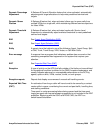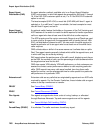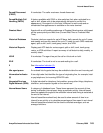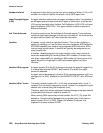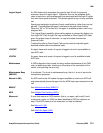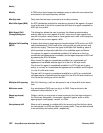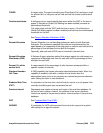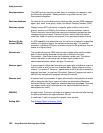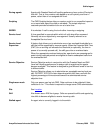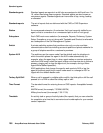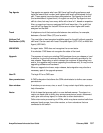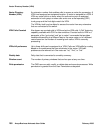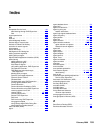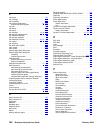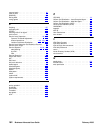
Vector
Avaya Business Advocate User Guide February 2006
157
Top Agents Top agents are agents who have Skill Level call handling preference and
have the lowest level number (and highest skill level) administered for that
skill. These agents have also been designated as Top Agents for that skill
(first administered, highest level). An agent can only be Top Agent on one
skill at a time, but may have many skills with a level of 1, based on expertise.
Also, an agent can have an assigned skill level lower than 1 for a skill, but
can still be Top Agent for that skill if there are no other higher skill levels
assigned on that skill.
Trunk A telephone circuit that carries calls between two switches, for example,
between a Central Office (CO) and a switch.
Uniform Call
Distribution (UCD)
The most idle or least occupied available agent for the skill, without regard to
skill level. Can be used with Least Occupied Agent (UCD-LOA) or Most Idle
Agent (UCD-MIA).
UNKNOWN An agent state. CMS does not recognize the current state.
A trunk state. CMS does not recognize the state of the trunk.
Upgrade The process of moving an existing CMS customer from one release or load
to another, to give the customer the additional functionality provided in the
new release. Depending on which release the customer is upgrading from,
and to, the upgrade may involve upgrading the software only, or may involve
upgrading software and hardware.
When an upgrade involves a major release, data migration may also be a
necessary part of the upgrade process.
User ID The login ID for a CMS user.
User permissions A CMS subsystem that allows the CSM administrator to define user access
permissions.
User window A window you can move, size, or scroll. It may contain input fields, reports, or
help information.
Vector A list of steps that process calls in a user-defined manner. The steps in a
vector can send calls to skills, play announcements and music, disconnect
calls, give calls a busy signal, or route calls to other destinations.
Calls enter vector processing via VDNs, which may have received calls from
assigned trunk groups, from other vectors, or from extensions that are
connected to the switch.



